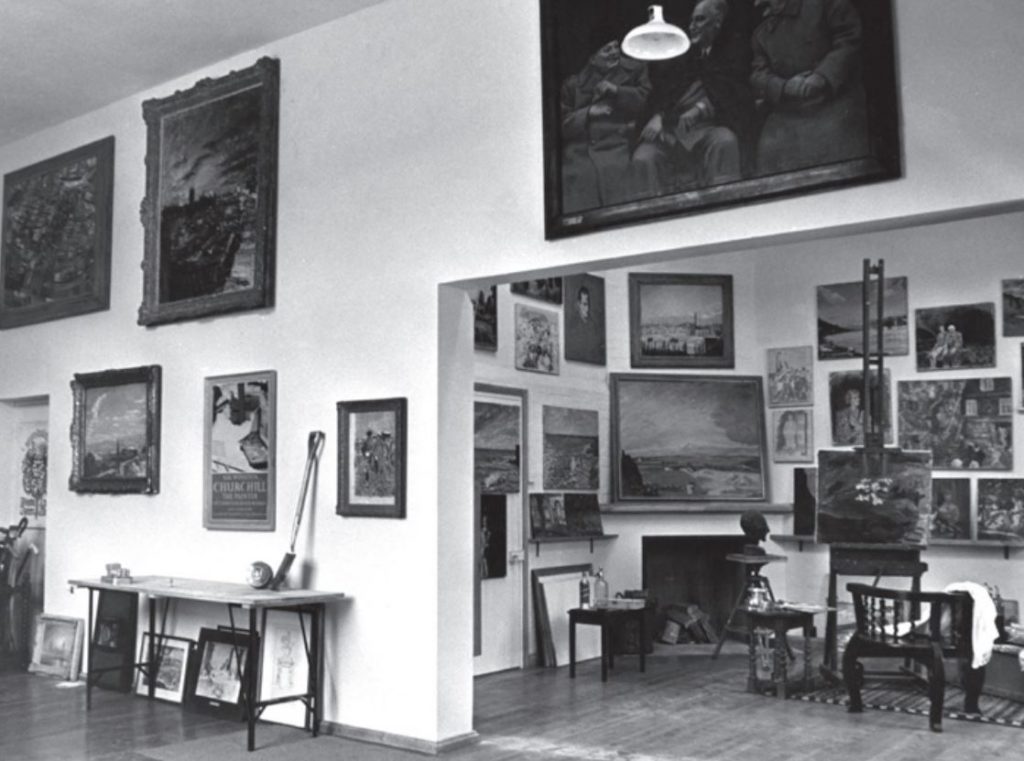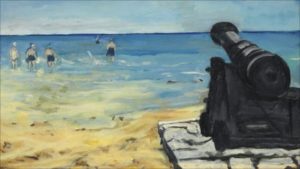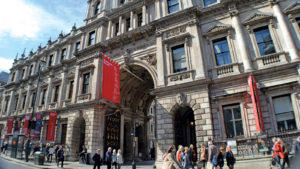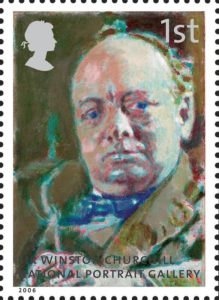Finest Hour 194
The Chartwell Studio Reborn

The studio as first opened to the public
September 28, 2022
Finest Hour 194, Fourth Quarter 2021
Page 30
By Katherine Carter
Katherine Carter works for the National Trust as Property Curator at Chartwell.
During Winston Churchill’s lifetime, his painting studio at Chartwell was always full to bursting with his art. When Chartwell opened to the public in 1966, however, the studio first remained closed. All of the paintings had been taken up to the house for cataloguing, and many were then sent on to Churchill’s family and close friends. With far fewer paintings on site, it was impossible to recreate the look and feel of the studio as Churchill had known it.
In the decades that followed, a number of paintings came back to Chartwell. Most were hung in the studio, which was eventually opened to the public, but without the original wooden grid system on the walls that Churchill had installed to create a framing effect. The resulting display looked unsatisfactory, a problem that intensified as more artwork returned.
As a result, a comprehensive rethinking of the space was overdue by the time I arrived at Chartwell in 2013. The need gained momentum in 2015 when more than thirty paintings, which previously had been on loan to the National Trust from Lady Soames, were guaranteed to remain at Chartwell after her death in lieu of estate taxes. At that point, we began planning for a major rehang of 150 canvasses altogether, while simultaneously welcoming 250,000 people to the house each year.
The lockdown that started in March 2020 due to government restrictions during the Covid pandemic offered the perfect circumstances for carrying out the project. With staff furloughed and volunteers sheltering-in-place, I began planning the new hang from home using a computer programme created for the process.
I aimed to make the space more like the studio Churchill had known, with denser display of his paintings on exposed wood shelving to recreate the way the original frame-effect affected their colours. My goal was to display the most important paintings in the studio in sightlines more intuitive to visitors: the blockbuster paintings in our collection would all be hung on primary and secondary walls.
Before that could begin, we had to clear out the entire studio for redecorating. Hanging mechanisms required adjusting. A carpenter recreated the original shelving. We removed objects in the studio that were not related to the story of Churchill’s art. Meanwhile, we checked the condition of each painting and cleaned paintings to conserve them. Only then could we put them back on the wall.
The result is one in which I take great pride (see back cover). Apart from restoring the appearance of the studio to a more original state, digital technology has been installed, sympathetic to the space and its stories, allowing visitors to navigate the room using tablets. By clicking on a painting on the wall and opening a page, guests can learn more about it. A “touch wall,” in a smaller room off the main studio, uses pioneering museum technology, allowing visitors to explore Churchill’s techniques and inspirations. They can even click on a country on a map of the world to see examples of the paintings he did there.
What I love most is to see our visitors’ response as they now walk into the room. I hear daily that it somehow feels lighter and brighter and—the jackpot for any curator—that it feels more like Churchill’s studio as he knew it.
Subscribe
WANT MORE?
Get the Churchill Bulletin delivered to your inbox once a month.






